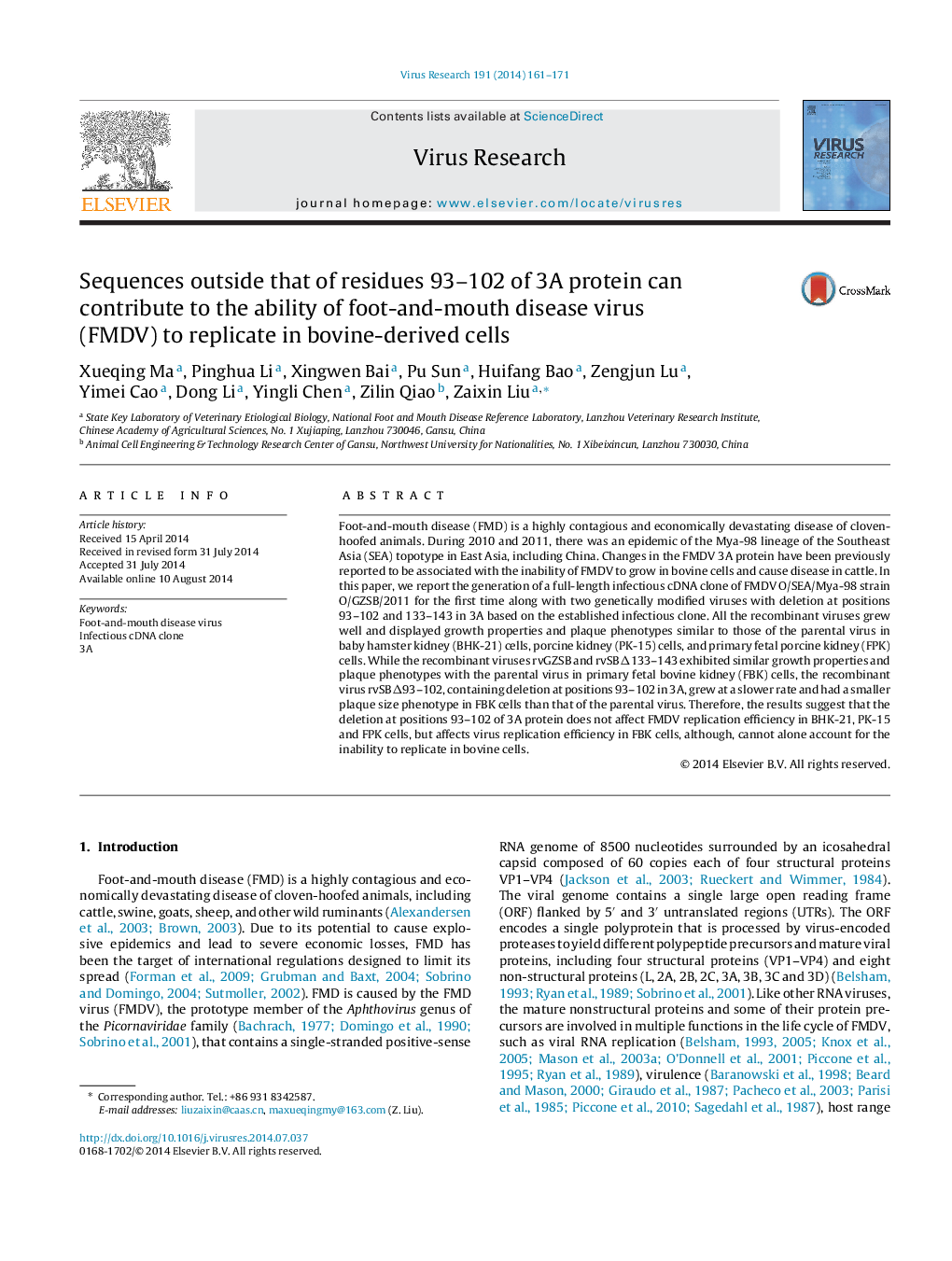| Article ID | Journal | Published Year | Pages | File Type |
|---|---|---|---|---|
| 6142361 | Virus Research | 2014 | 11 Pages |
Abstract
Foot-and-mouth disease (FMD) is a highly contagious and economically devastating disease of cloven-hoofed animals. During 2010 and 2011, there was an epidemic of the Mya-98 lineage of the Southeast Asia (SEA) topotype in East Asia, including China. Changes in the FMDV 3A protein have been previously reported to be associated with the inability of FMDV to grow in bovine cells and cause disease in cattle. In this paper, we report the generation of a full-length infectious cDNA clone of FMDV O/SEA/Mya-98 strain O/GZSB/2011 for the first time along with two genetically modified viruses with deletion at positions 93-102 and 133-143 in 3A based on the established infectious clone. All the recombinant viruses grew well and displayed growth properties and plaque phenotypes similar to those of the parental virus in baby hamster kidney (BHK-21) cells, porcine kidney (PK-15) cells, and primary fetal porcine kidney (FPK) cells. While the recombinant viruses rvGZSB and rvSBÎ133-143 exhibited similar growth properties and plaque phenotypes with the parental virus in primary fetal bovine kidney (FBK) cells, the recombinant virus rvSBÎ93-102, containing deletion at positions 93-102 in 3A, grew at a slower rate and had a smaller plaque size phenotype in FBK cells than that of the parental virus. Therefore, the results suggest that the deletion at positions 93-102 of 3A protein does not affect FMDV replication efficiency in BHK-21, PK-15 and FPK cells, but affects virus replication efficiency in FBK cells, although, cannot alone account for the inability to replicate in bovine cells.
Related Topics
Life Sciences
Immunology and Microbiology
Virology
Authors
Xueqing Ma, Pinghua Li, Xingwen Bai, Pu Sun, Huifang Bao, Zengjun Lu, Yimei Cao, Dong Li, Yingli Chen, Zilin Qiao, Zaixin Liu,
